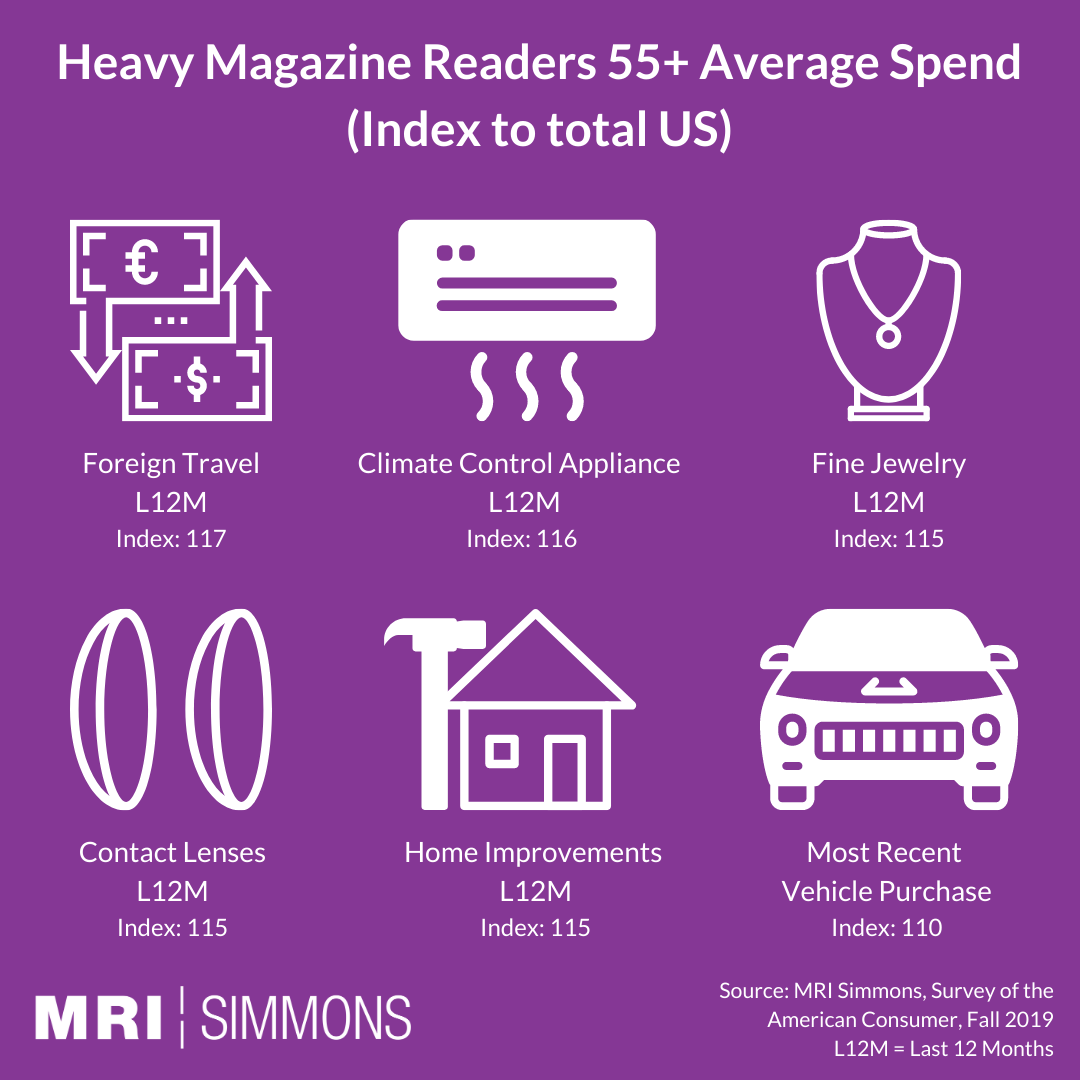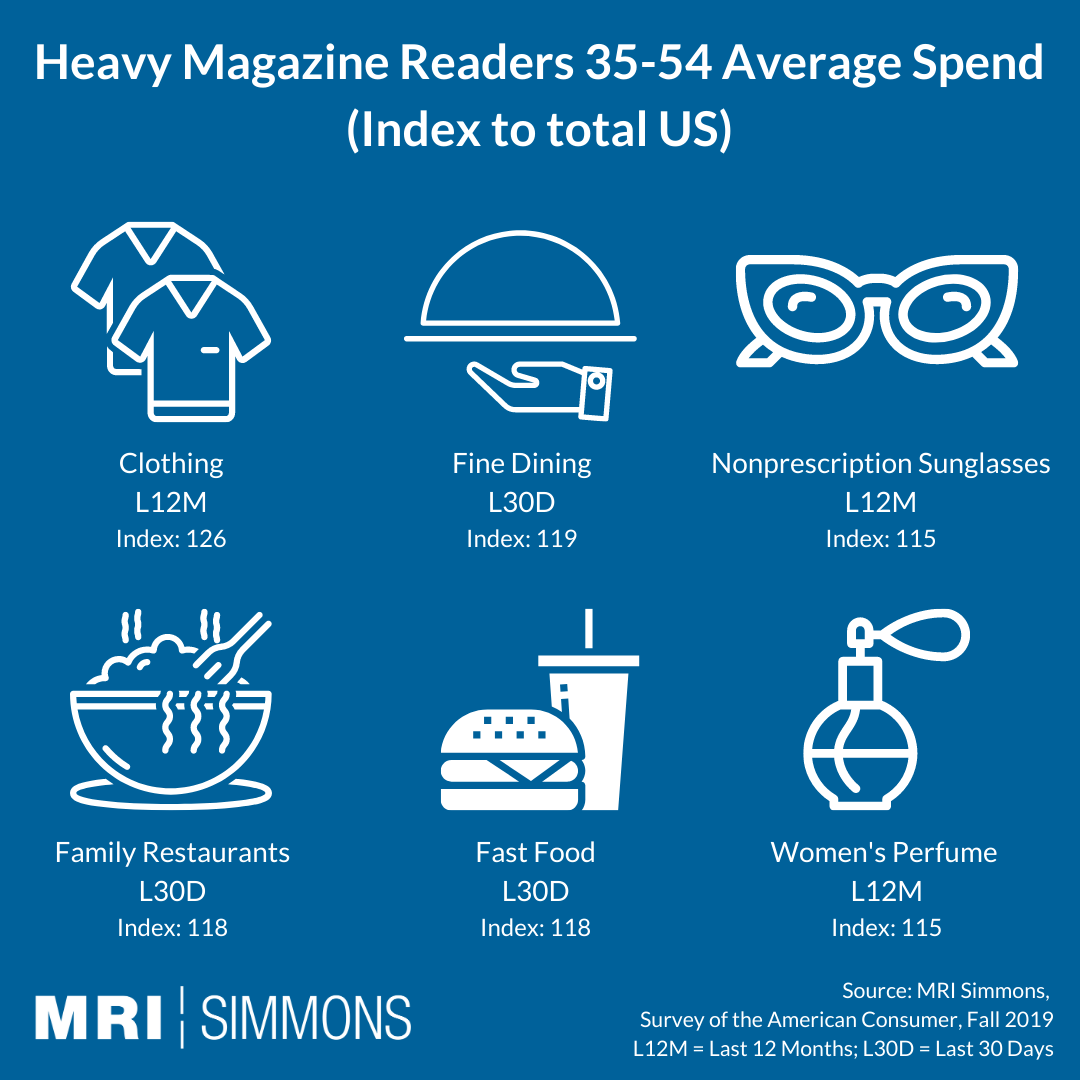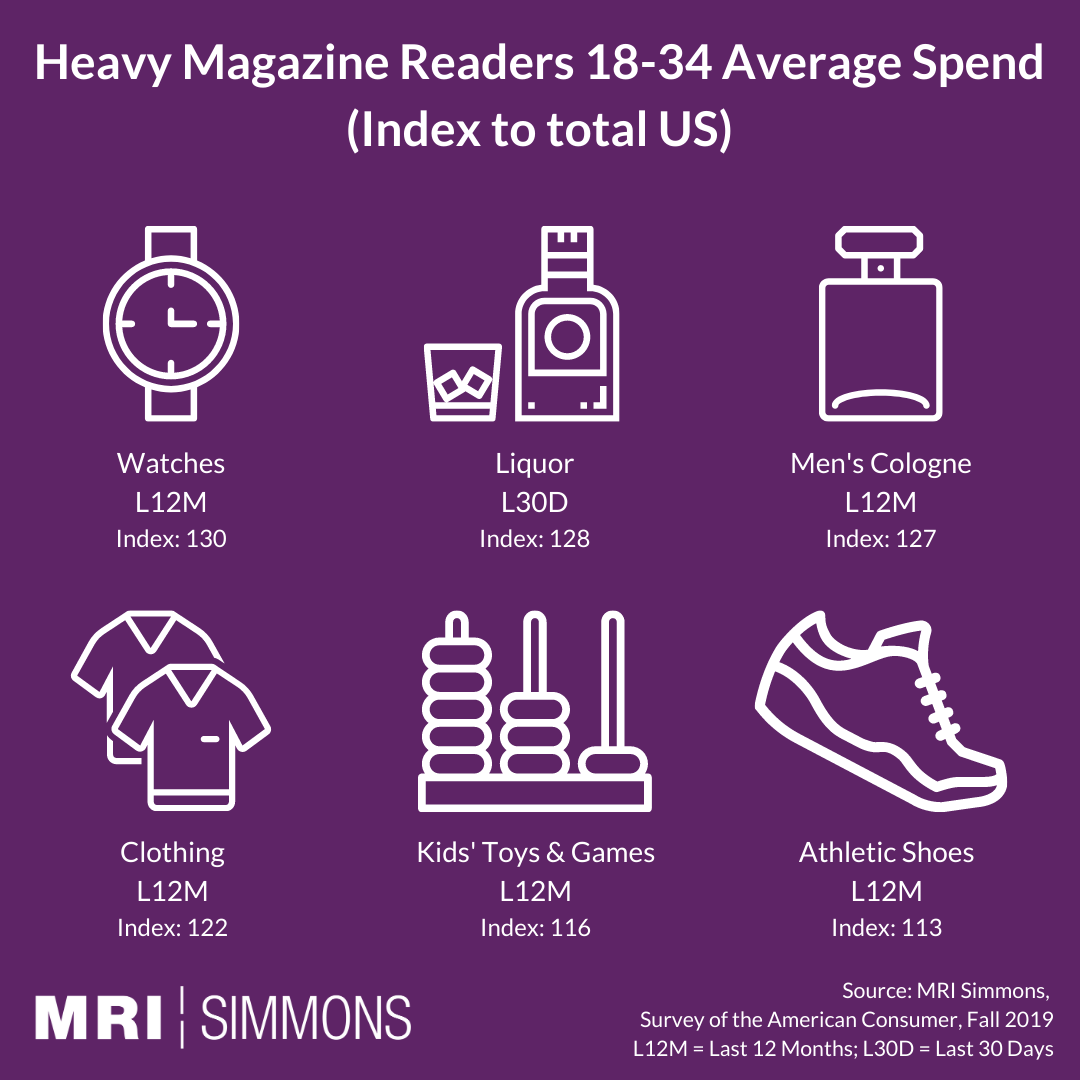The Power of Magazines: Reaching Big Spenders at Any Age
Having spent the better part of the spring gathering insights for the MPA’s Magazine Factbook, I have a new appreciation for readers’ connections to their magazines. In fact, during this strange summer of COVID, I’ve noticed I get a little thrill when I pull a physical magazine out of my mailbox. My kids will happily take a break from screens to read the new Sports Illustrated Kids or US Lacrosse Magazine. We all flip through the latest National Geographic, as we fantasize about adventures that may someday await us in the big wide world after travel restrictions ease. My husband likes to peruse the MIT Technology Review, and, I’ll admit it: I’m a sucker for US Weekly. I secret it away, to have on-hand for times that call for a small indulgence or distraction. The pandemic has also led me to rediscover The Economist, for a global take on the news. Even though our household has access to limitless streaming options and a healthy stable of video games, magazines still capture our imagination and our intellect by catering to our specific interests.
A previous blog on consumer engagement lays out “why” consumers still turn to magazines. Compared to the mass media experience of television and the hyper-targeted reach of websites, the magazine experience manages to deliver a very personal emotional payoff for the reader while still maintaining a format that’s meant to appeal to a broad audience. Yet engagement is but one part of the calculus that goes into an advertiser’s media plan.
To help build out the case for magazines, publishers and agencies need to also get specific on “who” an advertiser will reach with a magazine buy. A look at spending data from the MRI-Simmons Survey of the American Consumer is one way to start building this dimension. We continually track consumer spending across seventy-nine categories, and a quick analysis of spending by heavy magazine readers reveals a narrative that would appeal to advertisers across a variety of categories.
Going from oldest to youngest, heavy readers age 55+ demonstrate above average spending on products related to health care, home care, and larger luxury purchases like cars, fine jewelry, and foreign travel. Additionally, compared to your average adult, this group is 1.9x more likely to be buying tablet apps.

Those age 35-54 are big spenders across the broadest mix of product types – twenty-three in all. In addition to these being critical years for various lifestages, like growing a young family or investing in a home, these are also prime employment years when one has more income to spend on things like clothing & accessories, dining of all types, health & beauty, and more.

Last, magazines are not only the medium of choice for older consumers. Our data show that 17% of adults 18-34 – 12.4 million people – are heavy magazine readers, and they are avid spenders in categories like alcohol, watches, clothing, cologne, and children’s toys and games.

Given the breadth of titles and types being published today, there are magazines that appeal to each of these age groups, as well as many of the interest areas that tie back to these spending trends. Insights like these can help marketers understand the unique value of magazines and their readers and guide strategic decisions as they build out media plans.
Go deeper on this topic and more by downloading the MPA’s Magazine Media Factbook. This free resource contains almost one hundred pages of insights that publishers and agencies can use to lay out who magazines reach and why they remain a viable advertising channel for brands of all stripes.



